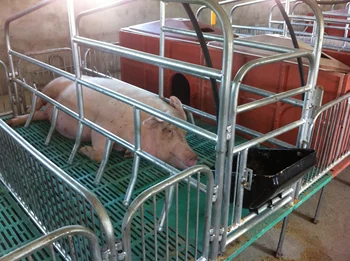feed pelletizing machine
നവം . 08, 2024 19:26 Back to list
feed pelletizing machine
The Evolution and Importance of Feed Pelletizing Machines in Modern Agriculture
In recent years, the agricultural sector has witnessed a significant transformation, particularly in livestock and poultry production. One of the technological advancements that have played a crucial role in this evolution is the feed pelletizing machine. These machines are designed to convert various raw feed ingredients into pellets, improving feed quality, efficiency, and overall animal health.
The Concept of Feed Pelletizing
Feed pelletizing is the process of compressing and molding feed ingredients into small, uniform pellets. This not only enhances the digestibility of the feed but also makes handling, storage, and feeding more manageable. With rising global demand for high-quality animal protein, the importance of pelletized feed cannot be overstated. The process helps in circumventing the inefficiencies associated with traditional loose feed, which can lead to waste and nutritional imbalances.
Advantages of Feed Pelletizing Machines
1. Improved Feed Efficiency One of the primary benefits of using a feed pelletizing machine is the improvement in feed efficiency. Pelleting the feed increases its density and makes it easier for animals to consume. This ensures that livestock and poultry receive a higher concentration of nutrients in each bite, leading to better growth rates and overall health.
2. Reduction of Feed Waste Loose feed can often be scattered and wasted, either by spillage or by being left uneaten. Pellets are easier to manage, significantly reducing waste. This not only saves costs for farmers but also leads to a more sustainable approach to feeding animals.
3. Enhanced Digestibility The pelleting process involves heating, which can help in breaking down certain anti-nutritional factors present in raw ingredients. This enhances the digestibility of the feed, allowing animals to absorb more nutrients. Additionally, the homogeneous nature of pellets ensures that all animals receive a consistent diet, critical for uniform growth.
feed pelletizing machine

4. Convenient Storage and Transportation Pellets occupy less space compared to loose feed, allowing for easier storage and transportation. This is particularly advantageous for farmers who need to manage supplies efficiently and minimize transport costs.
5. Improved Animal Health The uniformity and nutritional balance of pelleted feed contribute to better health in livestock and poultry. By providing a consistent and well-structured diet, farmers can help minimize health issues related to nutrition deficiencies, ultimately leading to lower veterinary costs and increased productivity.
Technological Advancements
Over the years, feed pelletizing machines have undergone significant advancements. Modern machines are equipped with advanced technology that allows for the precise control of temperature and pressure during the pelleting process. These features enhance the efficiency of feed production, ensuring that the pellets are not only nutritionally sound but also safe for animal consumption.
The Future of Feed Pelletizing
As the global population continues to grow, the demand for animal protein is expected to rise exponentially. The feed pelletizing industry is likely to see continued innovation, driven by the need for enhanced efficiency and sustainability. Technologies such as automation, machine learning, and artificial intelligence may play a pivotal role in optimizing the production of feed pellets, enabling farmers to meet the ever-increasing demand while minimizing resource usage.
In conclusion, feed pelletizing machines are an indispensable part of modern agriculture. They not only improve the efficiency of feed production but also contribute to better animal health and sustainable farming practices. As advancements continue to emerge in this field, we can expect to see even greater improvements in the quality of feed available to livestock and poultry, ultimately benefiting the entire agricultural supply chain. Embracing these technologies will be vital for farmers looking to thrive in an increasingly competitive and demanding market, ensuring that they can meet the needs of consumers while maintaining environmental sustainability.
-
Automatic Feeding Line System-Poultry Farming|Chicken Feeding&Watering
NewsJul.30,2025
-
Automatic Feeding Line System - Anping County Yize Metal Products Co., Ltd.|Pan Feeder Nipple Drinker,Broiler Farming
NewsJul.30,2025
-
Automatic Feeding Line System Pan Feeder Nipple Drinker-Anping County Yize Metal Products Co., Ltd.
NewsJul.30,2025
-
Automatic Feeding Line System-Anping County Yize Metal Products Co., Ltd.|Durable Construction&Easy Maintenance
NewsJul.30,2025
-
Automatic Feeding Line System-Anping County Yize Metal Products Co., Ltd.|Pan Feeder Nipple Drinker&Durable Poultry Farming Solution
NewsJul.30,2025
-
Automatic Feeding Line System Pan Feeder Nipple Drinker|Anping County Yize Metal Products Co., Ltd.
NewsJul.29,2025






